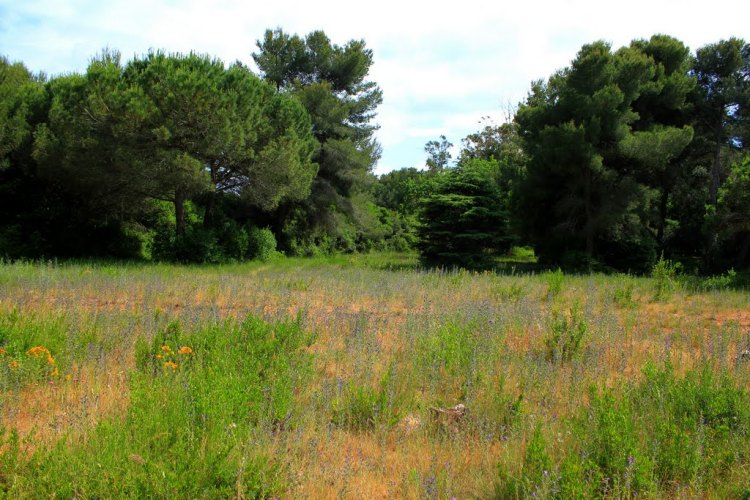Of Herbs and Stewed Rabbit

One possibility of Ithilien (Source)
If you thought we had left such long descriptions of nature behind in the Shire, then you were wrong: for here we have perhaps the most detailed and elaborate depiction of nature within The Lord of the Rings. Perhaps it is because the last three chapters have taken us through relative wastelands and deserts when compared to Ithilien; perhaps it is because Frodo and Sam’s story generally moves slower than that of the Three Hunters or the younger hobbits back in Rohan (we literally spent the whole last chapter thinking at the Black Gate). Whatever the reason, this long description of nature stands out to us, and even the skimming reading or uninterested party cannot miss it.
And what a detailing it is, for we see:
Ling and broom, cornel and larch, cedar and cypress, tamarisk and terebinth, olive and bay, juniper and myrtles, thyme and various colored sages, marjoram and parsley, saxifrages and stonecrops, primroses and anemones, filbert-brakes and asphodel, lilies and iris-swords, briar eglantine and clematis.
More than half of these are species or particulars that only the most avid gardener would know; and even those of us familiar with the names likely recall few images, smells, or particulars about the plants that would add to our understanding of Ithilien. So why should we bother in lingering on these plants?
For one, it signals some important information about the world of Middle-earth. According to J.A. Schulp (author of the article “The Flora of Middle-earth”), Tolkien’s maps place Ithilien 600 miles south of the Shire. If the Shire is comparable to mid-England in climate (which Tolkien basically admits in many places), then Ithilien would reside somewhere in the Eastern Mediterranean: Greece, Cyprus, or maybe Crete as examples. Though Tolkien at this time had not gone further in his travels in Europe than Switzerland, he does a particularly accurate job of detailing the nature that would be native in such an environment, likely from his reading of texts of antiquity and reports from wars afar. The flora of Ithilien, in all its details, helps us locate this pleasant location in our own world, which can give us clues to better understand it.
Second, the long descriptions of nature here help us appreciate the presence of Ithilien in our narrative. Here is a place very unlike where we have gone and where we must go from here: it is a resting place, a pause in our dark journey, a spot of beauty in an otherwise dreary approach. Here is a place where the joking conversation of Sam and Gollum does not feel out-of-place; here is a place where the notion of hobbits cooking a coney stew does not seem so ridiculous. As Helm’s Deep was a stronghold for a breath against many enemies, Ithilien is a refugee for recovering against many burdens. The long, detailed, winding descriptions of nature augment such a place.
And finally, these plants, these floral species, are details that matter because they are subtle details. For the reader that knows even on of these plants, or feels the urge to look them up following his or her reading of these pages, they provide a moment of joy, of discovery, of appreciation. They help the reader understand why Faramir and his Rangers could love this land so much and desire so wholeheartedly to defend it. They are the types of descriptions we would know about our own land, our own home, our own place that we love so fairly.
So suffer not the flora of Middle-earth: for in both the Shire and Ithilien there is much to muse over nature.
2016’s Reflection: “On the Correspondence of Conflict”
2015’s Reflection: “On the Edible Virtue of Coneys”
I had never really stopped to actually read the floral descriptions but they’re beautiful; thanks for making me slow down in my reading!
LikeLike